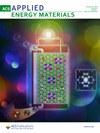Targeting histone demethylases JMJD3 and UTX: selenium as a potential therapeutic agent for cervical cancer
IF 5.4
3区 材料科学
Q2 CHEMISTRY, PHYSICAL
引用次数: 0
Abstract
The intriguing connection between selenium and cancer resembles a captivating puzzle that keeps researchers engaged and curious. While selenium has shown promise in reducing cancer risks through supplementation, its interaction with epigenetics in cervical cancer remains a fascinating yet largely unexplored realm. Unraveling the intricacies of selenium's role and its interaction with epigenetic factors could unlock valuable insights in the battle against this complex disease. Selenium has shown remarkable inhibitory effects on cervical cancer cells in various ways. In in vitro studies, it effectively inhibits the proliferation, migration, and invasion of cervical cancer cells, while promoting apoptosis. Selenium also demonstrates significant inhibitory effects on human cervical cancer-derived organoids. Furthermore, in an in vivo study, the administration of selenium dioxide solution effectively suppresses the growth of cervical cancer tumors in mice. One of the mechanisms behind selenium's inhibitory effects is its ability to inhibit histone demethylases, specifically JMJD3 and UTX. This inhibition is observed both in vitro and in vivo. Notably, when JMJD3 and UTX are inhibited with GSK-J4, similar biological effects are observed in both in vitro and in vivo models, effectively inhibiting organoid models derived from cervical cancer patients. Inhibiting JMJD3 and UTX also induces G2/M phase arrest, promotes cellular apoptosis, and reverses epithelial-mesenchymal transition (EMT). ChIP-qPCR analysis confirms that JMJD3 and UTX inhibition increases the recruitment of a specific histone modification, H3K27me3, to the transcription start sites (TSS) of target genes in cervical cancer cells (HeLa and SiHa cells). Furthermore, the expressions of JMJD3 and UTX are found to be significantly higher in cervical cancer tissues compared to adjacent normal cervical tissues, suggesting their potential as therapeutic targets. Our study highlights the significant inhibitory effects of selenium on the growth, migration, and invasion of cervical cancer cells, promoting apoptosis and displaying promising potential as a therapeutic agent. We identified the histone demethylases JMJD3 and UTX as specific targets of selenium, and their inhibition replicates the observed effects on cancer cell behavior. These findings suggest that JMJD3 and UTX could be valuable targets for selenium-based treatments of cervical cancer.以组蛋白去甲基化酶 JMJD3 和 UTX 为靶点:硒作为宫颈癌的潜在治疗剂
硒与癌症之间引人入胜的联系就像一个令人着迷的谜题,让研究人员始终充满好奇。虽然硒已显示出通过补充硒来降低癌症风险的前景,但硒与宫颈癌表观遗传学的相互作用仍然是一个引人入胜、但在很大程度上尚未被探索的领域。揭示硒的作用及其与表观遗传因素相互作用的复杂性,可以为防治这种复杂疾病提供有价值的见解。硒对宫颈癌细胞有不同程度的显著抑制作用。在体外研究中,硒能有效抑制宫颈癌细胞的增殖、迁移和侵袭,同时促进细胞凋亡。硒对人宫颈癌衍生的器官组织也有明显的抑制作用。此外,在一项体内研究中,服用二氧化硒溶液可有效抑制小鼠宫颈癌肿瘤的生长。硒产生抑制作用的机制之一是它能够抑制组蛋白去甲基化酶,特别是 JMJD3 和 UTX。这种抑制作用在体外和体内均可观察到。值得注意的是,用 GSK-J4 抑制 JMJD3 和 UTX 时,在体外和体内模型中都能观察到类似的生物效应,能有效抑制宫颈癌患者的类器官模型。抑制 JMJD3 和 UTX 还能诱导 G2/M 期停滞、促进细胞凋亡并逆转上皮-间质转化(EMT)。ChIP-qPCR 分析证实,抑制 JMJD3 和 UTX 会增加特定组蛋白修饰 H3K27me3 在宫颈癌细胞(HeLa 和 SiHa 细胞)靶基因转录起始位点(TSS)的招募。此外,与邻近的正常宫颈组织相比,JMJD3 和 UTX 在宫颈癌组织中的表达明显升高,这表明它们有可能成为治疗靶点。我们的研究表明,硒对宫颈癌细胞的生长、迁移和侵袭有明显的抑制作用,并能促进细胞凋亡,有望成为一种治疗药物。我们发现组蛋白去甲基化酶 JMJD3 和 UTX 是硒的特异性靶点,对它们的抑制复制了所观察到的对癌细胞行为的影响。这些研究结果表明,JMJD3和UTX可能是以硒为基础治疗宫颈癌的重要靶点。
本文章由计算机程序翻译,如有差异,请以英文原文为准。
求助全文
约1分钟内获得全文
求助全文
来源期刊

ACS Applied Energy Materials
Materials Science-Materials Chemistry
CiteScore
10.30
自引率
6.20%
发文量
1368
期刊介绍:
ACS Applied Energy Materials is an interdisciplinary journal publishing original research covering all aspects of materials, engineering, chemistry, physics and biology relevant to energy conversion and storage. The journal is devoted to reports of new and original experimental and theoretical research of an applied nature that integrate knowledge in the areas of materials, engineering, physics, bioscience, and chemistry into important energy applications.
 求助内容:
求助内容: 应助结果提醒方式:
应助结果提醒方式:


